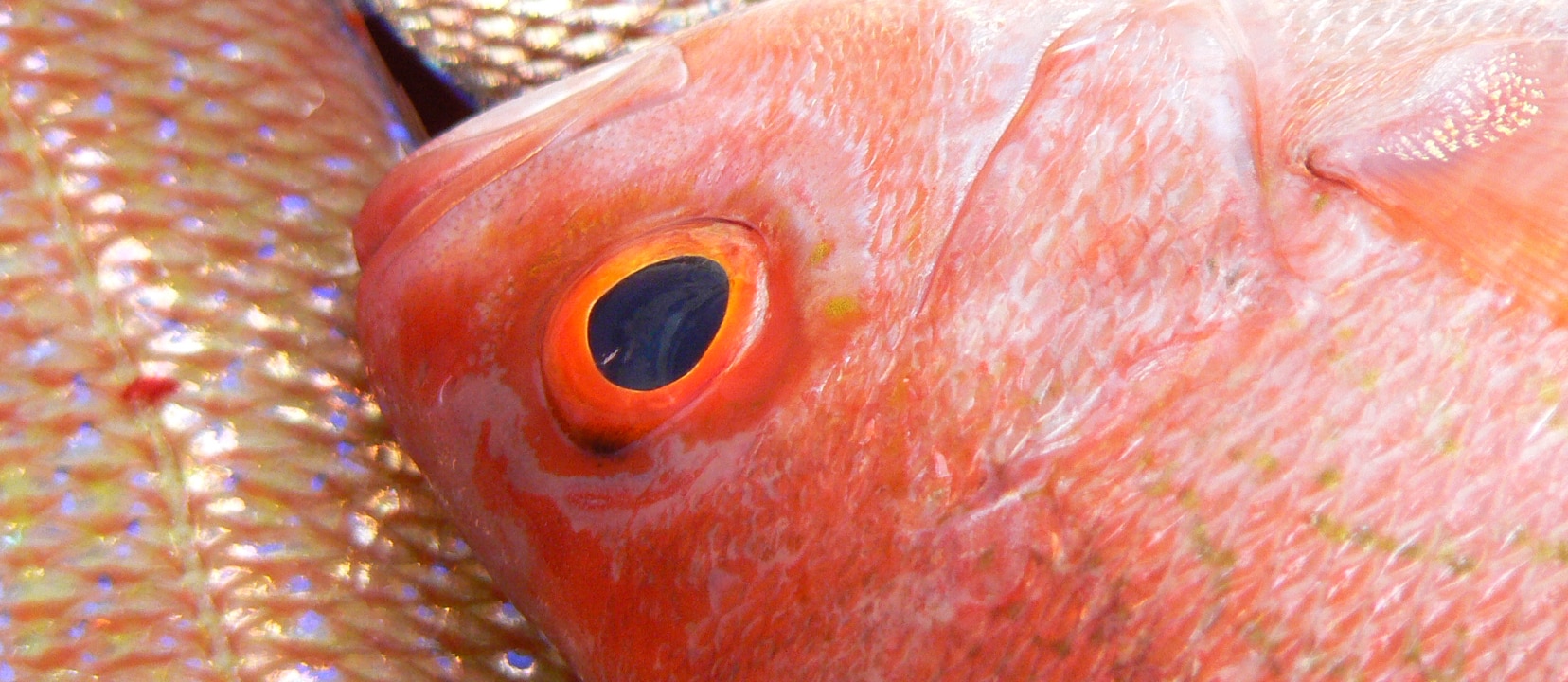Ciguatera is one of the most common forms of food poisoning, which occurs after the consumption of fish contaminated with neurotoxins produced by certain microalgae that build up the food chain. Just a few bites can be sufficient to induce the condition. Disturbingly, affected fish looks, smells, and tastes normal, and ciguatoxins are resistant to all forms of cooking. So, there is no straightforward method to predict whether a seafood meal can turn into a ciguatera nightmare.
It literally can cause nightmares; about one in six may experience signs of hallucinatory poisoning: lack of coordination, hallucinations, depression, and nightmares. Most suffer some kind of neurological symptoms, such as tingling, numbness, and a burning cold sensation. Sometimes, a reversal of temperature sensation occurs, where cold objects feel hot and vice versa. For instance, ciguatera sufferers have reported that a refreshing dive in the ocean actually caused burning pain, or that drinking cool beer felt like too hot coffee.
The toxin may also be apparently sexually transmitted, or as one of my favorite public health bloggers put it, “when hot sex turns cold and painful, blame it on dinner.”
As seen in my video Ciguatera Poisoning & Chronic Fatigue Syndrome, the symptoms can persist for months or even years. Ongoing research has shown that people with chronic fatigue syndrome may actually be suffering the long-term effects of this fish food poisoning or a condition called polymyositis, which causes diffuse muscle aches, pains, and inflammation. Some individuals intoxicated by fish consumption 25 years previously experience a recurrence of the main neurological disturbances during periods of overwork, fatigue, or stress. You can still find the toxins stuck in your body decades later.
Recent outbreaks in New York City have drawn attention to the problem. For example, a man ate grouper at a Manhattan restaurant and went from swimming two miles a day to having difficulty walking that lasted for months. But these aren’t just rare anecdotes. Ciguatera fish poisoning affects an estimated 15,000 Americans every year, causing hundreds of hospitalizations and even a few deaths. Because the toxins are colorless, odorless, tasteless, and not destroyed by cooking, CDC scientists suggest “education aimed at the prevention of seafood intoxication by avoidance of high-risk fish altogether.”
The AMA put out a similar advisory, suggesting that the only way to prevent it is to avoid eating fish like red snapper or grouper, but the problem is that a third of fish sold in the United States is mislabeled; so, we don’t know what we’re getting. Some suggest first feeding a portion of the fish meal to a cat, treating them like a court tester, and if they’re okay six hours later, we can dig in — but this was considered inhumane. But if it’s inhumane to feed it to your cat, how is it not inhumane to feed it to other members of the family?
Many more are killed by more conventional food poisoning bugs (Chicken Salmonella Thanks to Meat Industry Lawsuit), but how scary that you can get these toxins stuck in you and ruin your life? Reminds me of my Amnesic Seafood Poisoning video.
Other neurotoxin videos include Preventing Parkinson’s Disease With Diet and Essential Tremor and Diet.
In health,
Michael Greger, M.D.
PS: If you haven’t yet, you can subscribe to my free videos here and watch my live, year-in-review presentations—2013: Uprooting the Leading Causes of Death, More Than an Apple a Day, 2014: From Table to Able: Combating Disabling Diseases with Food, 2015: Food as Medicine: Preventing and Treating the Most Dreaded Diseases with Diet, and my latest, 2016: How Not To Die: The Role of Diet in Preventing, Arresting, and Reversing Our Top 15 Killers.
